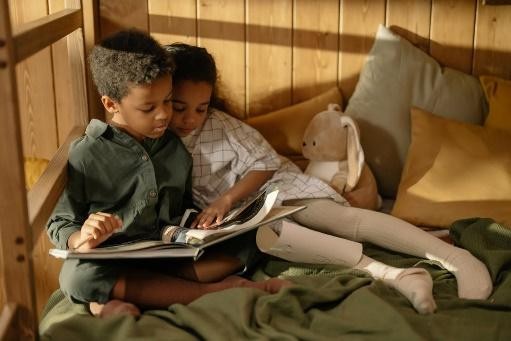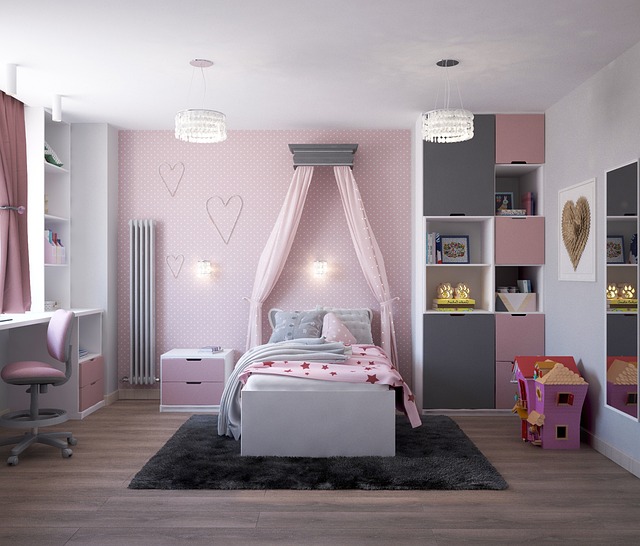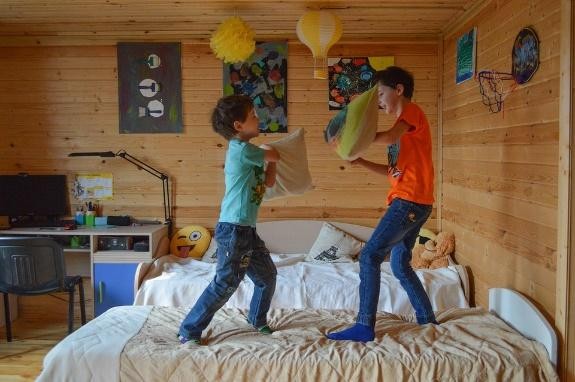Creating a comfortable and inviting bedroom for your child is essential for their overall well-being and development. The right furnishings and decor can contribute to a positive and stimulating environment, fostering creativity, organization, and restful sleep. In this comprehensive guide, we will explore various aspects of furnishing a child’s bedroom, from choosing the right furniture and bedding to creating a personalized and engaging space that reflects your child’s unique personality.

Furnish Child’s Bedroom: Where to Begin?
Furnishing a child’s bedroom can be an exciting but daunting task. To get started, it’s important to assess the available space and consider your child’s age, preferences, and needs. Begin by measuring the room to determine the dimensions and layout possibilities. This will help you make informed decisions when selecting furniture and arranging the space.
Choosing the Right Furniture

When selecting furniture for your child’s bedroom, prioritize functionality, safety, and durability. Opt for pieces that can adapt to your child’s changing needs over time. Consider investing in a sturdy and versatile bed that can be converted from a crib to a toddler bed and eventually to a full-sized bed. Look for dressers, bookshelves, and storage units that provide ample space for organizing toys, clothes, and books.
Bedding Essentials for Comfortable Sleep

A good night’s sleep is crucial for a child’s growth and development. Choose bedding that is soft, hypoallergenic, and easy to clean. Look for mattresses specifically designed for children, ensuring optimal support for their growing bodies. Use high-quality, breathable bed sheets and blankets that keep your child cozy without overheating.
Creating a Playful and Stimulating Environment
A child’s bedroom should be a space that sparks imagination and creativity. Incorporate playful elements such as colorful wall decals, themed bedding, and interactive toys. Consider adding a reading nook with a cozy bean bag chair and a bookshelf filled with age-appropriate books. Create designated areas for different activities, such as a study corner with a desk and a comfortable chair for homework or art projects.
Personalizing the Space
Allow your child to express their personality by involving them in the process of decorating their bedroom. Let them choose colors, themes, and decor items that resonate with their interests. Hang their artwork on the walls, display their favorite toys, and create a photo collage of precious memories. By personalizing the space, you will make it feel truly theirs and foster a sense of ownership and pride.
Safety Considerations
Ensuring the safety of your child is of utmost importance. Secure heavy furniture to the wall to prevent tipping accidents. Install window guards or safety locks to prevent falls. Use cordless window coverings to eliminate the risk of entanglement. Keep small items, electrical cords, and other potential hazards out of reach. Regularly inspect the bedroom for any safety issues and make necessary adjustments.
Individual Space
It’s easy to see why most children aren’t keen on sharing bedrooms with their siblings. After all, it’s hard to view space as your own if someone else’s belongings and furnishings are all over it. However, in many households, there’s simply no way around children sharing bedrooms.
Luckily, even in a shared bedroom situation, there are ways to ensure that everyone has their own space. For example, investing in a good room divider can provide your kids with a makeshift wall and effectively turn one room into two. This will help prevent kids from feeling as if their individual space is being encroached upon by any siblings with whom they share a bedroom.
Types of Bed
When selecting a suitable bed for a child’s room, there are a number of factors you’ll need to consider. The age of the child, the child’s preferences, safety levels, and the amount of free space are among the things you’ll need to think about when shopping around for the right bed. Similarly, if you’re dealing with a shared room situation, bunk beds can be effective tools for maximizing space.
Mattress size and quality should also feature prominently into your thinking. And while there’s nothing inherently wrong with frugality, purchasing a subpar mattress stands to negatively impact a child’s sleep quality. So, the next time you find yourself shopping for a kids mattress, make sure to take size, quality, and comfort level into account.
Study Space

It’s important for children to have a quiet place to study and do their homework. In the absence of such a space, concentration on schoolwork is liable to prove very difficult.
That being the case, every child’s bedroom should contain a designated study space. Among other things, this area should include a desk that’s spacious enough to comfortably accommodate computers, books and various other study materials. Furthermore, parents dealing with a shared room situation should make sure each child has an individual desk – provided, of course, the room has sufficient space. The older kids get, the more important study space becomes, so if your child has started school – or will soon be starting school – their bedroom should feature such an area.
Play Space
Bedrooms that contain ample play space are sure to meet the approval of kids who are bursting with energy and imagination. As such, play space is particularly important when creating bedrooms for small children. So, space permitting, make sure your child’s bedroom features a designated area for playing. In addition to housing various toys, this area should have enough space for kids to freely move around and expend their energy.

FAQs:-
Q: What are some essential furniture pieces for a child’s bedroom?
A: Some essential furniture pieces for a child’s bedroom include a bed, dresser, bookshelf, desk, and storage units. These items provide functionality and organization.
Q: How can I make my child’s bedroom more educational?
A: You can make your child’s bedroom more educational by incorporating interactive toys, books, and learning aids. Create a designated study corner and display educational posters or charts.
Q: How often should I update my child’s bedroom furniture?
A: It depends on the quality and condition of the furniture. As your child grows, you may need to update their bed and desk to accommodate their changing needs. However, durable and well-maintained furniture can last for many years.
Q: How can I maximize storage in a small child’s bedroom?
A: To maximize storage in a small child’s bedroom, utilize vertical space by installing wall shelves or bookcases. Opt for multifunctional furniture with built-in storage compartments. Use under-bed storage boxes and baskets to keep items organized.
Q: What are some age-appropriate decor ideas for a child’s bedroom?
A: Age-appropriate decor ideas for a child’s bedroom include wall decals with favorite cartoon characters, growth charts, themed bedding, and personalized name signs.
Conclusion
Designing and furnishing a child’s bedroom is an opportunity to create a space that promotes comfort, creativity, and safety. By carefully selecting furniture, bedding, and decor items, you can create an environment that supports your child’s growth and development. Remember to involve your child in the process, allowing them to express their personality and interests. With a well-furnished and personalized bedroom, your child will have a cozy retreat they can call their own.

